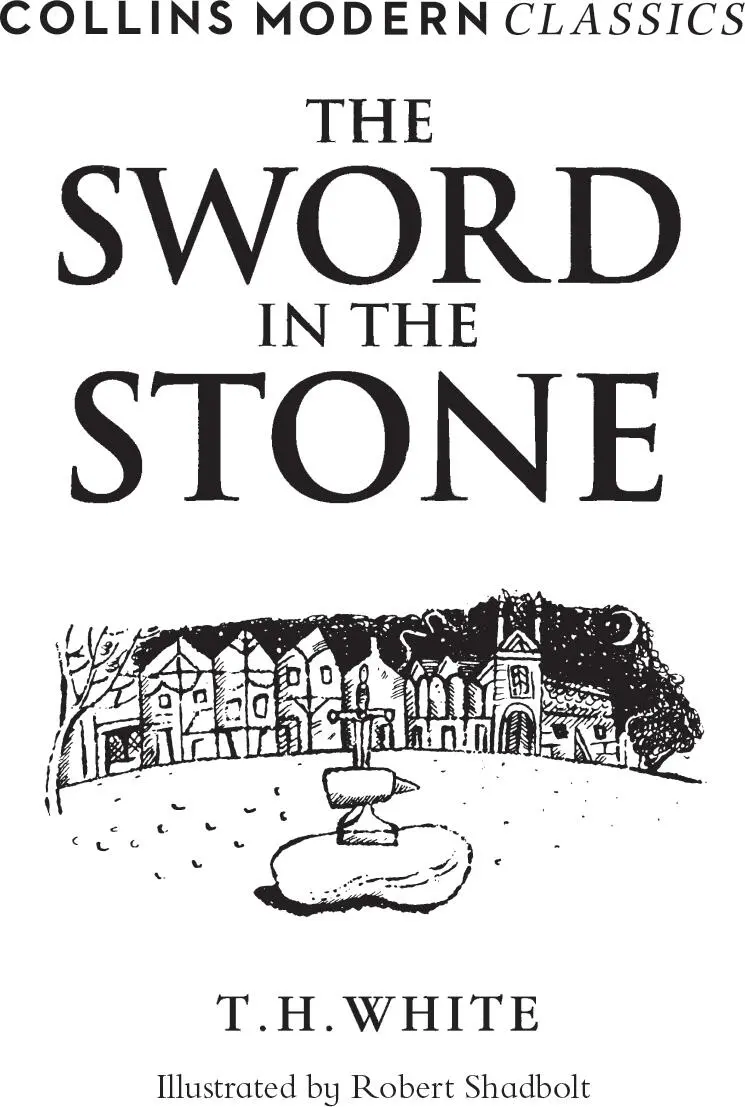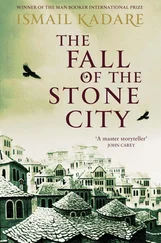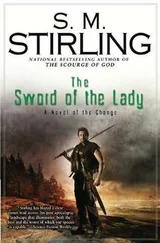
First published in Great Britain by William Collins Sons & Co. Ltd in 1938
This edition published by HarperCollins Children’s Books in 2016
HarperCollins Children’s Books is a division of HarperCollins Publishers Ltd,
1 London Bridge Street
London SE1 9GF
The HarperCollins Children’s Books website address is
www.harpercollins.co.uk
Text copyright © T H White 1938
Illustrations copyright © Robert Shadbolt 1998
Why you’ll Love This Book copyright © Garth Nix 2008
Cover design © HarperCollins Publishers 2016
Cover illustration © Manuel Šumberac 2016
T. H. White and Robert Shadbolt assert the moral right to be identified as the author and illustrator of this work.
A catalogue copy of this book is available from the British Library.
All rights reserved under International and Pan-American Copyright Conventions. By payment of the required fees, you have been granted the non-exclusive, non-transferable right to access and read the text of this e-book on screen. No part of this text may be reproduced, transmitted, down-loaded, decompiled, reverse engineered, or stored in or introduced into any information storage and retrieval system, in any form or by any means, whether electronic or mechanical, now known or hereinafter invented, without the express written permission of HarperCollins.
Source ISBN: 9780007263493
Ebook Edition © 2016 ISBN: 9780007370740
Version: 2016-07-26
For Sir Thomas Maleore Knight
***
“I pray you all, gentlemen and gentlewomen that readeth this book, from the beginning to the ending, pray for me while I am on live, that God send me good deliverance, and when I’m dead, I pray you all pray for my soul.”
Sir Thomas Maleore, Knight.
July 31 st, 1485.
Why You’ll Love This Book by Garth Nix
The Sword in the Stone is one of my favourite books, and one that I read again every three or four years – which confirms its position as one of the most significant books in my life. I have many hundreds if not thousands of books that I like very much and may have read twice, but the number of books that I continually go back to and have read at least half a dozen times is much more limited.
Writing this piece has made me think about why I keep coming back to The Sword in the Stone and why has it lasted so well, from my first reading at the age of twelve to my very recent reading at the age of forty-four (practically an ancient of days, or so my twelve year-old self would have thought).
So why do I keep re-reading The Sword in the Stone ? Is it the brilliant way in which T. H. White mixes up the modern, the historical and the mythic? Absolutely. Is it the wonderful story, which though based on the legend of King Arthur offers so much more from between and behind the scenes of the myth? Definitely. Is it because of the characters, from the sympathetic but realistic portrait of an orphan boy who will one day become a king to that most creatively-invented wizard of any book, the living backwards through time Merlyn. Of course.
I love the book for all these things, and more. It is a book full of rich details that you don’t always notice the first time through, small asides and historical titbits that if you want to investigate will lead you into all sorts of fascinating stuff, from falconry to medieval hunting terms to satirical comment on 1930s British society, with side-trips through philosophy, sociology, zoology and doubtless several other ‘ologies.
But even though the book is packed with what might be called pre-Internet hotlinks to amazing information – and personally I was led to all kinds of other books by White – you don’t need to know or care about all the great depth of knowledge that underpins the novel. You won’t be put off by White’s cleverness or erudition, because the story comes first, and The Sword in the Stone is always a cracking good read.
Finally, all I can add is to say that ever since I was twelve, I have wanted a wizard’s workroom exactly like Merlyn’s, with everything that is described in the book, from the real corkindrill hanging from the rafters to the complete set of cigarette cards depicting wildfowl by Peter Scott. Those few pages describing Merlyn’s room offer a prime example of the genius of T. H. White, for in that scene he mixes references to his contemporary time of the 1930s with history, myth and legend. He makes it work and be real and true, and it is strong enough to stick in the mind of the reader not just while they read the book, but forever. I may not have managed to get a room like Merlyn’s, but I don’t really need to, because all I have to do is open up The Sword in the Stone , and I will be there, and can once again inhabit and enjoy one of the greatest and most influential fantasy novels of the last hundred years.
Garth Nix
Garth Nix is an internationally bestselling author of sci-fi and fantasy, his work includes The Old Kingdom trilogy and the Keys to the Kingdom series. Before becoming a full time writer, he worked as a book publicist, a publisher’s sales representative and an editor. Along the way he was also a part-time soldier in the Australian Army Reserve. To date his books have sold millions of copies worldwide, and have won numerous prizes including the Aurealis award.
CONTENTS
Cover
Title Page
Copyright
Dedication
Why You’ll Love This Book by Garth Nix
Chapter One
Chapter Two
Chapter Three
Chapter Four
Chapter Five
Chapter Six
Chapter Seven
Chapter Eight
Chapter Nine
Chapter Ten
Chapter Eleven
Chapter Twelve
Chapter Thirteen
Chapter Fourteen
Chapter Fifteen
Chapter Sixteen
Chapter Seventeen
Chapter Eighteen
Chapter Nineteen
Chapter Twenty
Chapter Twenty-One
Chapter Twenty-Two
Chapter Twenty-Three
Chapter Twenty-Four
More Than A Story
About the Author
Also by T. H. White
About the Publisher

On Mondays, Wednesdays, and Fridays it was Court Hand and Summulae Logicales, while the rest of the week it was the Organon, Repetition and Astrology. The governess was always getting muddled with her astrolabe, and when she got specially muddled she would take it out on the Wart by rapping his knuckles. She did not rap Kay’s knuckles because when Kay grew older he would be Sir Kay, and the master of the estate. The Wart was called the Wart because it rhymed with Art, which was short for his real name. Kay had given him the nickname. Kay was not called anything but Kay, because he was too dignified to have a nickname and would have flown into a passion if anybody had tried to give him one. The governess had red hair and some mysterious wound from which she derived a lot of prestige by showing it to all the women of the castle, behind closed doors. It was believed to be where she sat down, and to have been caused by sitting on a broken bottle at a picnic by mistake. Eventually she offered to show it to Sir Ector, who was Kay’s father, had hysterics and was sent away. They found out afterwards that she had been in a lunatic hospital for three years.
Читать дальше















